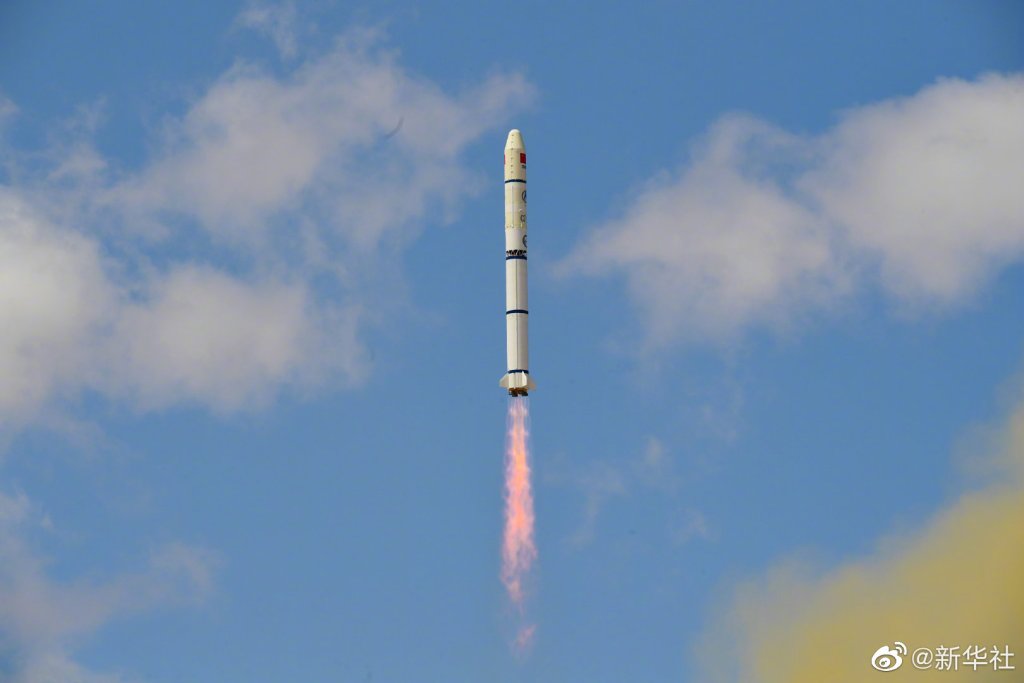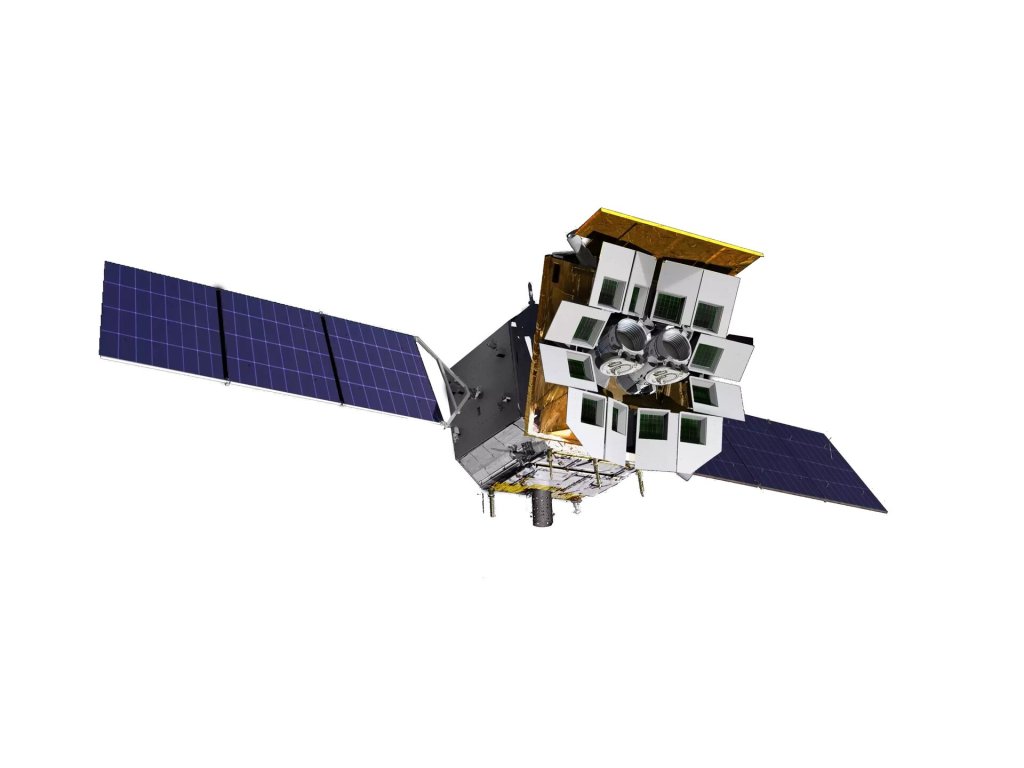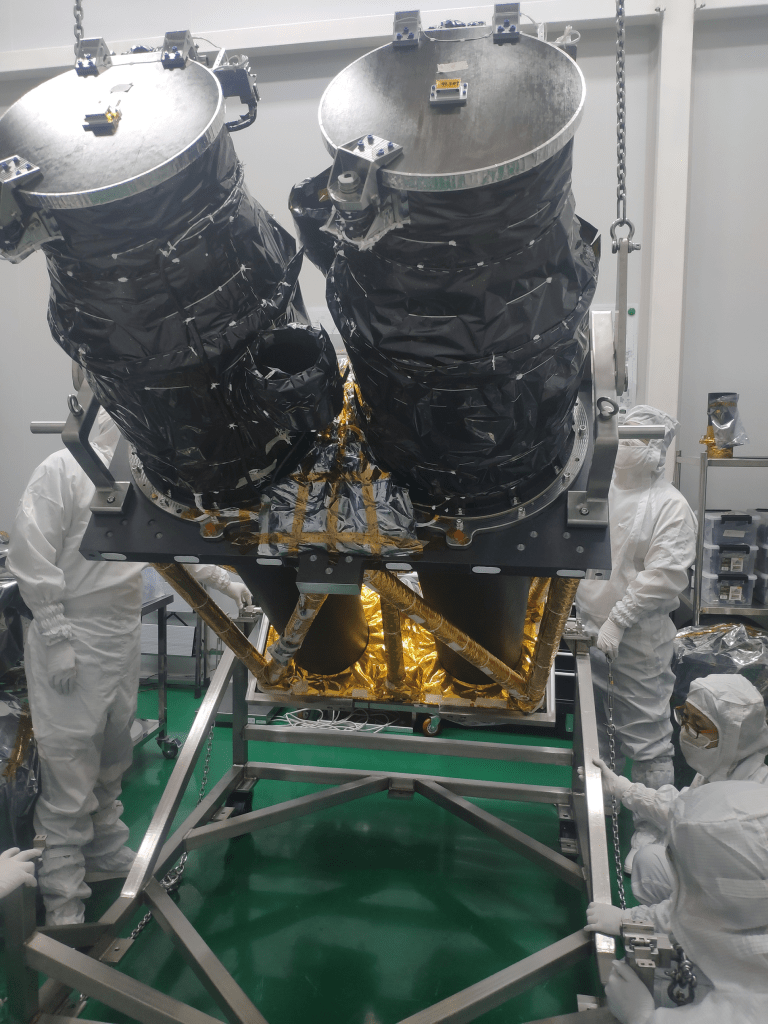Featured image credit: CAST
Liftoff Time | January 9, 2024 – 07:03 UTC | 15:03 BJT |
|---|---|
Mission Name | Einstein Probe (EP, or 爱因斯坦探针, in Mandarin Chinese) |
Launch Provider | China Aerospace Science and Technology Corporation (CASC) |
Customer | Chinese Academy of Sciences (CAS) European Space Agency (ESA) Max Planck Institute for Extraterrestrial Physics (MPE) |
Rocket | Long March 2C |
Launch Location | Launch Complex 3, Xichang Satellite Launch Center, in Sichuan, China |
Payload mass | 1,450 kg (~3,200 lbs) |
Where did the satellite go? | A circular low-Earth orbit (LEO) at an altitude of 600 km (~370 mi) and an inclination of 29 degrees |
Did they attempt to recover the first stage? | No, this is not a capability of the Long March 2C |
Where did the first stage land? | It will crash on land in central China |
Did they attempt to recover the fairings? | No, this is not a capability of the Long March 2C |
Were these fairings new? | Yes |
This was the: | – 75th launch of a Long March 2C – 1st launch of a Long March 2C of 2024 – 2nd Chinese launch of 2024 – 7th orbital launch attempt of 2024 – 506th launch of a rocket in the Long March family |
Where to watch | Unofficial summary video |
What’s All This Mean?
China Aerospace Science and Technology Corporation (CASC) prepares to launch a Long March 2C carrier rocket lofting the Einstein Probe (EP) satellite on January 9, 2024. The Chinese Academy of Sciences (CAS) leads the project, with collaboration of the European Space Agency (ESA), and the Max Planck Institute for Extraterrestrial Physics (MPE). This launch vehicle will lift off from Launch Complex 3, at the Xichang Satellite Launch Center, located in the Sichuan province of China. Once the rocket’s task is complete, the observatory should be in a circular low-Earth orbit (LEO) at an altitude of 600 km (~370 mi), and an inclination of 29 degrees.
How Did It Go?
A little earlier than the analysts’ prediction, the CZ-2C lifted off starting its mission. After that, Chinese official media reported that the rocket successfully achieved all of its flight milestones. That is, it finished its task by deploying the Einstein Probe into the intended orbit.
What Is The Einstein Probe?
Built by CAS, the Einstein Probe X-ray observatory is in fact an important scientific satellite. Set to study objects emitting energy in the soft X-rays band — particularly, varying emissions — the probe will survey wide regions in the sky. That is, it will monitor many sources at a time, like black holes, supernovae, among others. As a matter of fact, after only three orbits around the Earth, the Einstein Probe is capable of seeing almost the whole night sky.
The satellite masses at 1,450 kg (~3,200 lbs), while it roughly measures 3.4 m (~11 ft) by 3.0 (~10 ft). Further, the spacecraft’s design should allow it to function for at least three years.
Einstein Probe’s Instruments
During its lifetime, EP will use two different instruments to carry out measurements. One of them serves the purpose of conducting a general survey of the sky, while the other focuses on interesting targets found by the former. Here is a review of them in that order.
WXT — Wide-field X-ray Telescope
This is an innovative instrument inspired by the eyes of lobsters. These feature very small square holes forming a grid, but one that is placed on a sphere. Thanks to this design, the detector inside each of the WXT’s modules receives X-Rays coming from a much wider field of view. In fact, the telescope uses 12 such modules to make observations with a field of view of 3,600 square degrees. This instrument will work in the energy range going from 0.5 keV to 4.0 keV, while enabling a resolution of less than 170 eV at 1.25 keV.
FXT — Follow-up X-ray Telescope
In contrast to WXT, this instrument is a more traditional one regarding its design. In further detail, the FXT features two identical Wolter-I X-ray telescopes. Each of them has a smaller field of view, but allowing for much higher resolution, and larger light collecting power. In this case, the instrument makes observations in the energy range from 0.5 keV to 8.0 keV. It achieves the same resolution of less than 170 eV at 1.25 keV.
Science By The Einstein Probe
The observatory will be on the lookout for new objects in the sky, and the phenomena affecting them. In order to do this, it will aim at satisfying these objectives, as reported by CAS:
- Discover and characterize various cosmic X-ray transients, including faint and distant ones.
- Discover and characterize X-ray outbursts of quiescent black holes, providing insights into the distribution of black holes in the universe and enhancing our understanding of their origin, evolution, and accretion.
- Localize gravitational-wave events by capturing X-ray signals from the sources, enabling the triggering of follow-up multi-messenger systems for multi-wavelength observations of these events.
European Contributions
ESA provided support in testing and calibrating the optic and detectors on the WXT instrument. Additionally, the agency provided the assembly of mirrors for one of the FXTs, in collaboration with MPE, and Media Lario from Italy. Similarly, MPE supplied the mirror assembly for the other FXT, and the detection modules for both of these telescopes. Finally, the probe will communicate with ESA’s ground stations. In return, ESA will get access to 10 % of the data generated by the satellite.
What Is The Long March 2C?
The Long March 2C is a two-stage medium-lift launch vehicle, with an optional third stage, derived from China’s Long March 2B vehicle. It is able to put up to 3,850 kg into low-Earth orbit, and up to 1,250 kg into geostationary transfer orbit (GTO).

Stages Of The Long March 2C
First Stage
The first stage has four open cycle YF-20C engines. Each engine runs on dinitrogen tetroxide (N2O4) and unsymmetrical dimethylhydrazine (UDMH), producing 740 kN of thrust each, while featuring a specific impulse (ISP) of 260 s. Overall, the first stage produces 2,960 kN of thrust and carries 182,000 kg of propellant. The first stage is 25.72 m tall, and 3.35 m in diameter.
Second Stage
The second stage runs on a single YF-24E engine, which contains one main YF-22E engine for thrust, and four YF-23C attitude control thrusters. The main engine produces 816 kN of thrust and the attitude control thrusters each produce 47 kN, and both run on N2O4 and UDMH. The main engine’s ISP is ~300 s, and the attitude control thrusters have an ISP of 289 s. The second stage is 7.75 m tall, 3.35 m in diameter, and carries 162,700 kg of propellant.
Third stage
The third stage, the Yuanzheng, is a restartable upper stage. Specifically, the variant used on the Long March 2C is designated YZ-1S. The Yuanzheng allows launch vehicles to deploy their payloads directly into high energy orbits, e.g., medium-Earth orbit (MEO) and geosynchronous orbit (GSO). The stage features one YF-50D engine, which like the first and second stages runs UDMH and N2O4. It provides 6.5 kN of thrust, while achieving an ISP of 315.5 s. The stage can perform at least two burns within its lifespan of 6.5 hours.
Rocket section adapted from Trevor Sesnic‘s original text.











Hello, may I ask if you have this actual trajectory map for the recent rocket launch? I’m from Taiwan and would like to know if the rocket passed over the airspace of the main island of Taiwan.
Hi, 王! Here’s the link to a message in the thread on NSF’s forum dedicated to this launch. You’ll see the trajectory plotted over a map there. Also, keep in mind the rocket might have been above what’s considered Taiwanese airspace. Let me stress the “might” there, because of two reasons: 1) I’m not sure of the altitude the rocket was flying at right in that moment; 2) off the top of my head, I don’t remember what international (even less, local) regulations say about where airspace ends, and space starts. I’m aware this can be a sensitive matter.
Anyway, here’s the link:
https://forum.nasaspaceflight.com/index.php?topic=58082.msg2556522#msg2556522